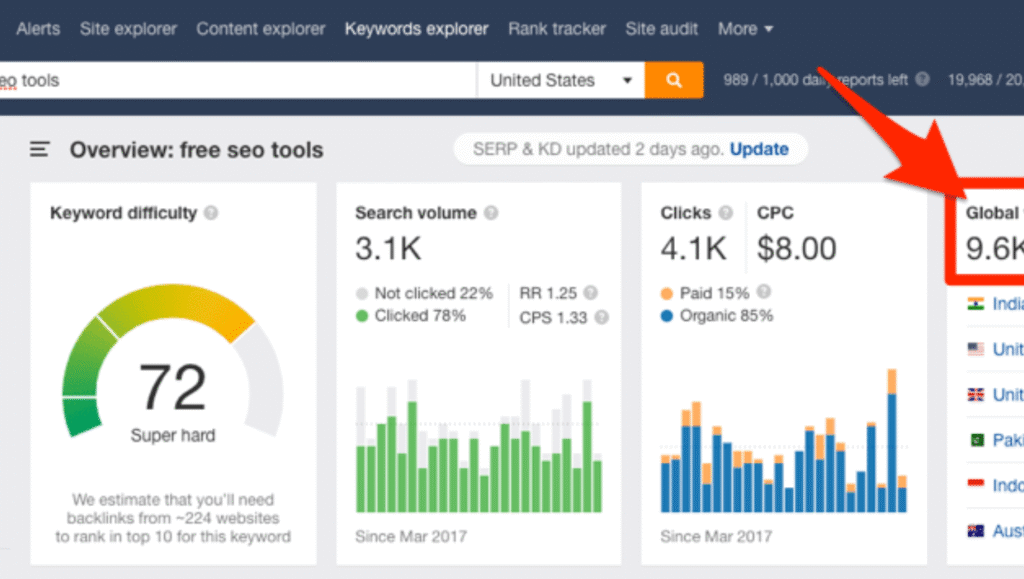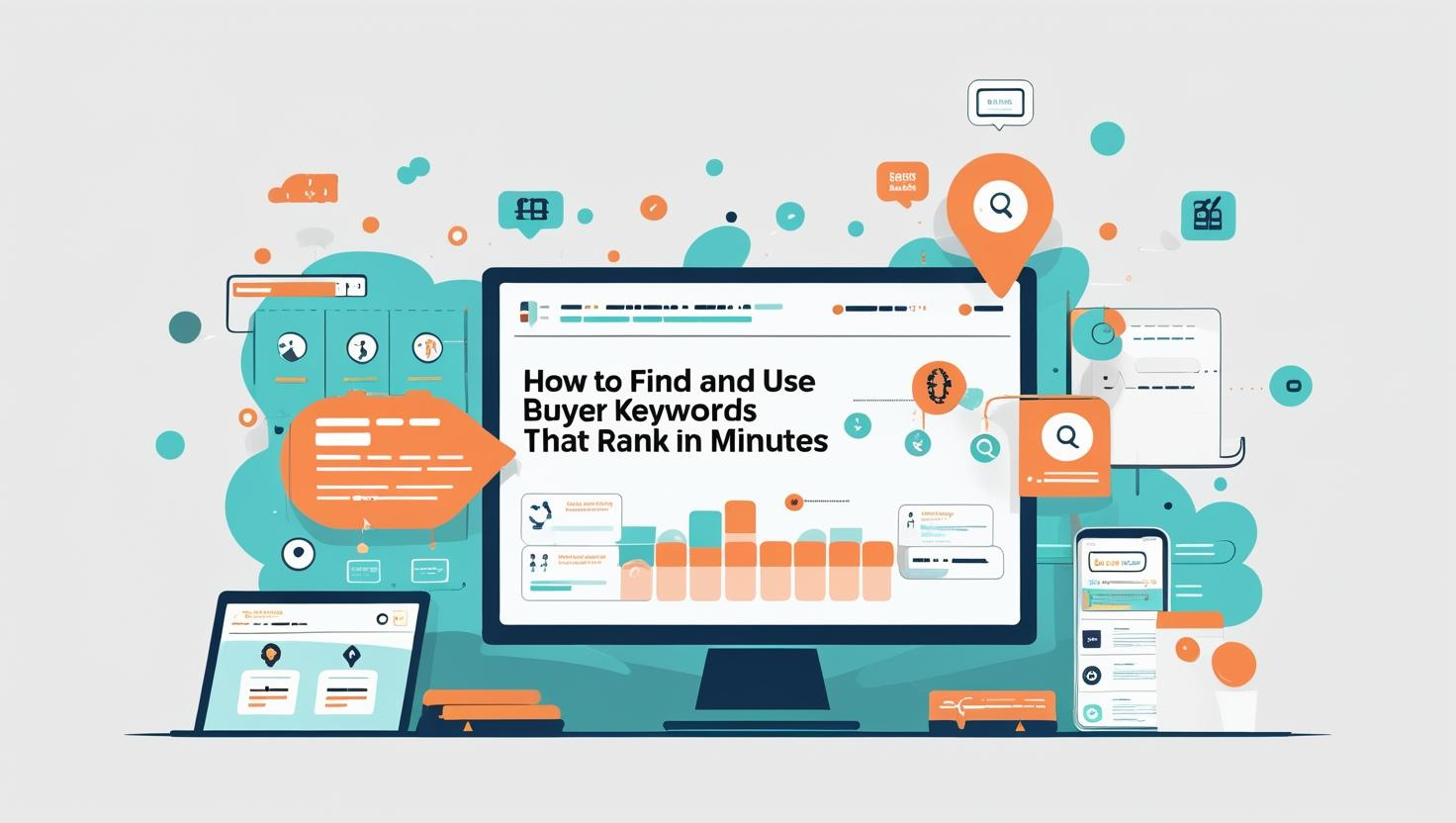If you’re ready to take control of your SEO strategy and drive real sales, mastering the art of identifying buyer keywords is essential. These potent terms, with their clear intent, are your key to attracting ready-to-buy customers. Whether you’re managing a blog, an e-commerce store, or a niche site, leveraging the right keywords that convert can help you achieve faster rankings and increased earnings.
This guide shows you exactly how to uncover keywords with commercial intent, build smart keyword clusters, and use actionable SEO tips to beat the competition. Stop chasing clicks—start using keywords that bring real results and rankings in minutes.
What Are Buyer Keywords and Why Do They Matter?
Buyer keywords are search terms that indicate a person is ready to make a purchase or take a specific action. These are also referred to as transactional keywords or high-purchase-intent terms. When someone types “best laptop under $1000” or “where to buy an air purifier,” they’re not just browsing—they want to buy. That’s the power of buyer intent keywords examples.
Using these keywords helps attract visitors who are likely to convert. If you’re running an affiliate site or eCommerce store, you need keywords that convert, not just ones that bring random traffic. These words lead to real action—sales, sign-ups, or clicks on your affiliate links.
Understanding Buyer Intent and the Customer Journey
Every customer moves through the buyer’s journey stages—awareness, consideration, and decision. Each stage has different keywords attached. People in the awareness stage use general terms. In contrast, those ready to buy use commercial intent keywords.
If you match your content with these stages, your site becomes more useful and visible. This is where understanding action keywords becomes critical. Aligning your blog posts or product pages with the needs of your buyer persona at each stage helps build trust and increase your conversion rate.
The Benefits of Targeting Buyer Keywords
Using buyer keywords saves you time and gives faster results. Unlike broad terms, these keywords are laser-focused on users who are looking to act. That means higher SERP ranking, more clicks, and more revenue. You won’t just get traffic—you’ll get traffic that buys.
Additionally, targeting these keywords enables you to craft more effective meta descriptions that drive clicks. You’re not wasting energy on general terms. Instead, you’re using low-competition, high-volume keywords that bring faster and better results.
How to Find Buyer Keywords That Rank Fast

The first step is to start with a seed keyword, like “headphones.” Then, expand it into high-converting keywords using tools like Semrush or Google Keyword Planner. These tools display keyword difficulty, search volume, and even keyword suggestions that indicate buying intent.
You can also look for “where to buy [product] keywords,” “best [product] for [need],” or “[product] reviews.” These long, specific terms—also known as long-tail keywords—are easy to rank and attract serious buyers. For instance, ‘where to buy an affordable DSLR camera’ or ‘best DSLR camera for professional photography’ are effective long-tail keywords. Use ‘e’ in SEM to find gold keywords that your competitors might be missing.
The Power of Keyword Clusters for Fast SEO Wins
Instead of focusing on single keywords, grouping related terms into keyword clusters is a smart move. This approach not only helps you create comprehensive content but also supports your pillar post SEO strategy. For instance, if your main keyword is “best DSLR camera,” including related ones like “DSLR camera for beginners” or “DSLR vs mirrorless” can significantly boost your SEO strategy.
Here’s a small comparison table for better clarity:
Cluster TypeExample Keywords
Commercial Intent best DSLR camera for travel, DSLR deals today
Informational DSLR camera features, how DSLR works
Comparison DSLR vs mirrorless, Canon vs Nikon
Creating these groups helps you increase your search engine visibility and improve your rankings.
Tools to Find Buyer Keywords That Work
Several of the best tools for keyword research help you uncover hidden gems. Semrush is powerful for finding low-competition, high-volume keywords. Google Keyword Planner gives insight into search volume and trends. Use Ahrefs, Ubersuggest, or even Google Search Ads for keyword suggestions.
When you use these tools, don’t just look for traffic. Focus on intent. Is the keyword helping the user solve a problem or make a decision? If yes, it’s a keyword worth targeting.
How to Use Buyer Keywords in Your Content Strategy
Once you have your list, it’s time to use it smartly. Start by creating landing pages or blog posts that match buyer intent keywords, such as examples. Place your keyword in the meta description, title, and introduction. Don’t overuse—it must feel natural.
Follow the AIDA framework: Attention, Interest, Desire, Action. This flow keeps readers hooked and leads them to take action. Start with a compelling headline that grabs their attention, then build their interest with engaging content. Create a desire for the product or service by highlighting its benefits, and finally, prompt them to take action, such as making a purchase or signing up. Using the right keywords while telling a good story makes your content truly effective.
Examples of Buyer Keyword Use for Better Rankings
Imagine you run a blog about home office chairs. A post titled “Best Office Chair for Lower Back Pain” with affiliate links and product comparison will attract buyers. Compare features, give real data, and use actionable SEO tips.
Here’s a case study format you can follow:
Post TitleBuyer Keyword UsedOutcome
Best Noise Cancelling Headphones 2025 best noise cancelling headphones Ranked in 10 days, 3K visits/mo
Where to Buy Ergonomic Desk Chair Online: where to buy ergonomic desk chair 25 sales in first 2 weeks
Real-world examples demonstrate how to utilize keywords that are designed to convert, not just inform.
What to Avoid: Low Intent and Useless Keywords
It’s crucial to be strategic in your keyword selection. Many beginners fall into the trap of targeting keywords that bring traffic but no conversions. Avoid terms that are vague or purely informational unless they’re part of your keyword cluster. For instance, “What is a laptop?” might bring traffic, but it’s unlikely to attract buyers.
Additionally, avoid stuffing your content with keywords. Google’s smarter now. Focus on intent, quality, and the buyer persona. Don’t let low-intent words dilute your real message.
Quick Recap: 30-Second Summary
Buyer keywords help you target real shoppers, not just random readers. Utilize keyword research tools like Semrush, focusing on long-tail keywords, and establish robust keyword clusters. Avoid vague, low-intent terms. Create content using the AIDA framework to turn clicks into conversions.
Write naturally, use keywords in your meta description, and offer actionable SEO tips in every post. This is the fastest way to grow your traffic and your sales.
Final Thoughts: Start Ranking with Buyer Intent
To achieve results quickly, learn how to identify buyer keywords and utilize them effectively. Focus on keywords that convert. Match them to your buyer’s journey stages and build content around real needs. Utilize smart tools, analyze your competitors, and maintain consistency.
By targeting keywords with commercial intent, building a pillar post SEO strategy, and creating content that solves problems, you’ll rise in the rankings and stay there. Don’t wait—start implementing these tips today and watch your site grow.
FAQs About Buyer Keywords
Q1: What makes a keyword a “buyer” keyword?
A buyer keyword shows clear purchase intent. Terms like “buy,” “best,” “discount,” or “compare” signal users are ready to act.
Q2: Can I use free tools to find buyer keywords?
Yes! Tools like Google Keyword Planner and Ubersuggest are free to use. They help find keyword suggestions, search volume, and keyword difficulty.
Q3: How do I know if a keyword will convert?
Look at the searcher’s intent. If someone is comparing products or asking where to buy, it’s likely a high-converting keyword.
Q4: Should I only use long-tail buyer keywords?
They’re easier to rank and attract specific buyers. Mix them with mid-level terms in your keyword clusters.
Q5: How often should I update my buyer keyword list?
Regularly. Trends shift. Review your keyword list from competitors, update your terms as needed, and monitor the results every month to ensure optimal performance.
You Also Read Articles : The Most Important SEO Plugins for WordPress (2025 Guide)
Welcome to Depthoverdrive,
I’m Syeda Naqvi, a passionate SEO content writer with 3 years of experience in crafting engaging, optimized, and reader-friendly content. I specialize in creating content that not only ranks on search engines but also provides real value to readers, with a strong understanding of keyword research, on-page SEO, and content strategy.


1 thought on “How to Find and Use Buyer Keywords That Rank in Minutes: The Ultimate Guide”